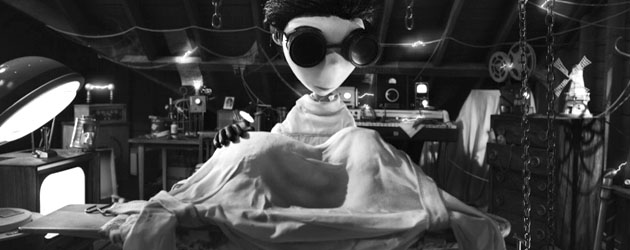Rick Heinrichs

Lemony Snicket actually started with Barry Sonnenfeld in New York and then when he dropped out of the picture it came back to LA with Brad. He just sort of picked up the whole idea of the parallel universe with all these different periods layered on top of each other. We weren’t trying to say, This is history. We were trying to tell a story. Once you’re on that road you start seeing all these connections between things that you wouldn’t have thought. It felt like we were inventing a new era that had an Edwardian feel to some of the clothing, layered with the Art Deco we had going on in there. We had the modern technology of cell phones and tape recorders but taken way back in time and reinvented for that period. Which was really cool. Every day became a kind of an adventure to figure out how we are going to propagate that feel throughout the world we were creating.
AS: Sleepy Hollow was another film where you created a fantasy world from another time.
RH: The adventure of doing Sleepy Hollow with Tim was the opportunity to really experiment. The original idea was to create Hammer horror movie-style exteriors on stage. We’ll throw some atmosphere in there and light it theatrically and stylistically. We thought, It’s okay if it’s a little theatrical. But we were combining that with real locations. We hit upon this sort of naturalism that we brought onto stage with us and left the Hammer horror thing behind. The DP, Chivo Lubezki, was incredibly talented at lighting exteriors on stage.
AS: Beautiful movie…
RH: It was also exciting to not depend so much on visual effects and to be in a stylized and theatrical world. It had a heightened naturalism to it. I ended up calling it “Colonial Expressionism” at the time. But that’s when I was combining Expressionism with almost any other word! And it kind of works! The idea was to come up with these very emotive images in almost a painterly way. When you’re not just going to locations and selecting them but you’re actually building everything from the ground up you can concentrate on the metaphors, like a village where the houses are crowded together fearfully. There’s a herd of sheep that you can hear the bleating of and when you get Danny Elfman’s music and Johnny Depp and Chivo’s lighting and Tim’s direction then you get a feeling from all those elements that transcends and creates that heightened naturalism. That is why I love working in the industry and why I love going to movies.
AS: Were you always drawing pictures as a kid?
RH: I was always drawing but I hadn’t the faintest idea what an art director was —unlike today where almost every film school has a course in production design or art direction for film. I worked for a bit in New York pursuing cartooning and animation and then came out to CalArts to study animation and ended up at Disney Studios.
How did I get to be an art director from that? A lot of it was working with Tim. I could make models and sculptures and draw and provide the world for this guy. Doing that I realized, Oh, this is actually a job that somebody does. You make the world for what they’re trying to do and it’s called art direction. I remember in an old cinematographer’s magazine